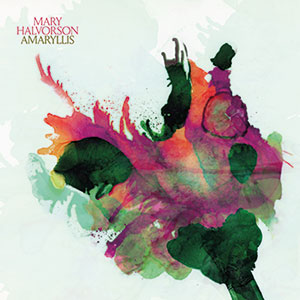Mary Halvorson: Amaryllis/Belladonna
Editor's Choice
Author: Andy Robson
View record and artist detailsRecord and Artist Details
Musicians: |
Mary Halvorson |
Label: |
Nonesuch Records |
Magazine Review Date: |
June/2022 |
Media Format: |
2 CD, 2 LP, DL |
Catalogue Number: |
0075597912739/0075597910377 |
RecordDate: |
Rec date not stated |
A new label and a flowering of new material from the ever-fecund Halvorson. There are actually two different albums which can be bought together or separately. Each stands alone but it’s impossible not to compare and contrast how they complement yet challenge each other. To this end the titles are of course significant, as words, often in a poetic context, always have significance for Halvorson. If Amaryllis is the beautiful bulb that can symbolise love, even innocence, then Belladonna is the ambiguous sister from the same botanic family, a bringer of death yet, in the right dosage, a saver of lives. The use of strings is prominent on both releases, but like those titles, the differences are as crucial as the similarities. Belladonna (not of course to be confused with the splendid Ian Carr/Nucleus album of the same name) is written for an ‘improvising’ string quartet, with Halvorson’s guitar plastically entwining throughout the quartet’s playing. Amaryllis in contrast is a sextet driven suite of six pieces where the strings largely colour and contrast with the more prominent ‘jazz’ elements.
Trish Clowes may find Belladonna particularly interesting. The saxophonist has increasingly explored the relationship between strings and improvisation in her work with the Swan Orchestra and cellist Louise McMonagle. Halvorson uses a lush cello theme on ‘Haunted Head’, dark and sensuous, to test her notable solo. It’s also intriguing that another massive-voiced woman guitarist, Hedwig Mollestad, increasingly writes with strings structures. Belladonna is necessarily more intimate than a Mollestad epic: on the melancholic modes of ‘Moonburn’ she grows more emphatic throughout, but as a parasitic mistletoe threads and winds about its host, so Halvorson finds her guitar separate yet utterly reliant on the string structure for its existence. The closing title track has intimations of Bartok and Hermann in the strings, but we're not allowed to settle as the guitar goes astral above them.
By contrast Amaryllis buzzes and hums as the sextet relishes Halvorson’s written-through parts but obviously is bursting to improvise: ‘Night Shift’ has an irresistible line, underwritten by Fujiwara’s fabulous drums until the trombone, very Roswell Rudd style, wins out. Halvorson’s guitar is less prominent than on Belladonna, but her writing liberates this extraordinary band, whether on ‘Anesthesia’, with its echoes of Bley and Burton’s A Genuine Tong Funeral that brings Brennan to the fore, or the space allowed to O’Farrill’s trumpet on the title track. The release of either of these albums would be significant: but to have them released simultaneously is a major musical event.

Jazzwise Full Club
- Latest print and digital issues
- Digital archive since 1997
- Download tracks from bonus compilation albums throughout the year
- Reviews Database access
From £9.08 / month
Subscribe
Jazzwise Digital Club
- Latest digital issues
- Digital archive since 1997
- Download tracks from bonus compilation albums during the year
- Reviews Database access

